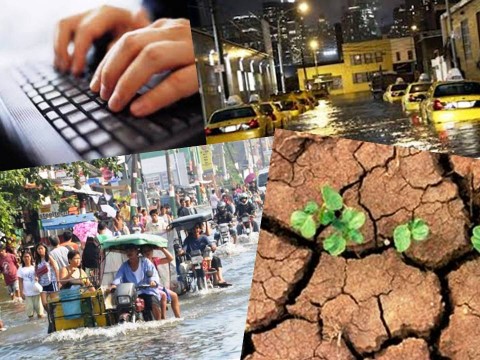Training on Climate Literacy: Navigating Climate Change Conversations

E-learning Course on Developing and Monitoring Agriculture Carbon Projects
July 23, 2013
International Day for Disaster Reduction 2013
September 15, 2013- Type: Training Course
- Date: 20 May – 19 Jul 2013 and 18 Sep – 04 Dec 2013
- Location: Online
- Main organizer: University of British Columbia (UBC)
Description
This course explores the basic concepts and terms needed to understand the science of climate change, and the available mitigation, adaptation and policy options. By the end of the course, students will be able to:
- Tell the story of our climate, describing how interactions among atmosphere, ocean, land, and life lead to climatic changes at all timescales
- Evaluate the likely effect of historical human fossil emissions and land use changes on Earth’s energy balance and climate.
- Describe the direct observations of climate change in the second half of the 20th century, and articulate the evidence attributing global warming in this time period to human causes.
- Assess the utility – and limits – of climate models to predict global and regional climate change.
- Articulate the demographic, economic, technological and political factors that influence both humans’ impact on the climate and humans’ vulnerability to climate change.
- Express an informed opinion on the scope and urgency of the efforts needed to both mitigate and adapt to climate change.
This course provides the scientific basics of climate change paired with the response options (mitigation and adaptation) and policy landscape. Focusing exclusively on the science of climate change may not allow a nuanced understanding of the social implications of this science. Similarly, political or economic analyses of climate change frequently neglect the underlying mechanics behind climate change thresholds, feedbacks, and the potential for abrupt change. This course explores linkages between climate change and other pressing priorities such as human health, poverty, community livability, economic resilience, and other environmental problems (such as biodiversity and water quality). Acknowledging the urgent need to design innovative strategies that realize multiple objectives (or co-benefits) simultaneously, the course explores the particular capacity for sustainability and climate change to provide an avenue for achieving these objectives.
Course Syllabus
Climate literacy is delivered in ten modules. The first half of the course deals mainly with climate change science and models, while the second half of the course speaks to climate change impacts, response options, and polices. The modules are as follows:
- Climate in the public sphere
- Introduction to the climate system
- The energy budget of the earth
- Climate models
- The climate forecast
- Climate change impacts
- Climate change mitigation: Dealing with the causes
- Climate change adaptation: Dealing with the effects
- Policy tools for mitigation and adaptation
For more information, visit: http://www.preventionweb.net/english/professional/trainings-events/events/v.php?id=32832

